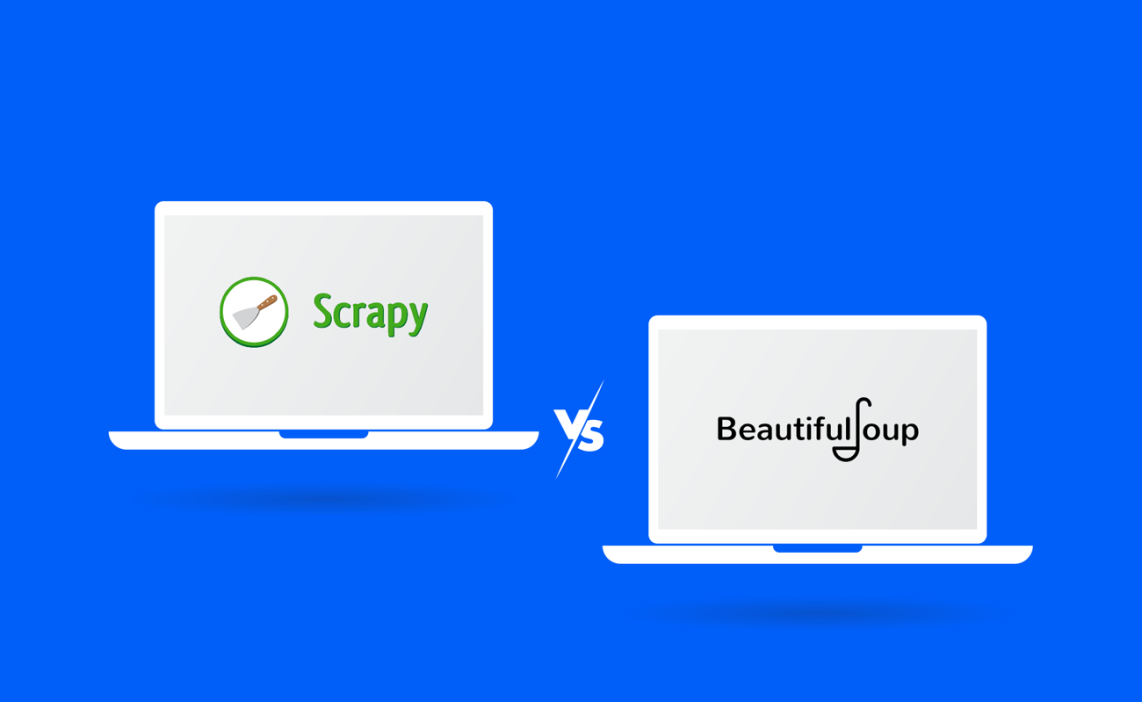You’ve probably heard of these two foolproof tools to extract massive data from websites. But which one should you choose for your custom-built web scraping projects? Let’s dive deep into the extensive features, building blocks, and strategies of both to help you make an informed decision.
What is Web Scraping?
Web scraping is the automation of the data extraction process from websites. It’s critical in data science, machine learning, and other tech fields. Python is often the language of choice for web scraping, and Scrapy and Beautiful Soup are two of its most potent libraries.
Scrapy: The Robust Framework
Features and Capabilities
Scrapy is a comprehensive web scraping framework that allows you to build spiders—automated programs that crawl websites and extract data. It’s a more robust, feature-complete, and extensible tool than Beautiful Soup. Scrapy provides a wide range of features, including:
Speed and Parallelization: Scrapy can execute multiple requests simultaneously, incredibly fast. Its ability to send asynchronous requests makes it hands-down faster than BeautifulSoup.
Error Handling: It streamlines error handling and allows for sensible spider programming.
Data Storage: Scrapy enables the post-processing and storing of scraped data in various formats like JSON, XML, and CSV.
Middleware and Extensions: Scrapy is highly extensible, supporting a variety of middleware and extensions.
Learning Curve
Scrappy has a steeper learning curve. However, once you get the hang of it, you’ll find it a powerful tool for your advanced scraping needs. It’s easily extensible and has built-in support for extracting data, making it both memory and CPU-efficient.
Scalability
One of the most significant advantages of Scrapy is its scalability. It is designed to extract large amounts of data. This tool is ideal for projects that require scraping entire websites or multiple web domains.
Scalability is crucial in artificial intelligence applications, frequently demanding large datasets for machine learning algorithms.
Middleware and Proxy Support
Scrapy’s middleware support allows you to add custom functionalities to your web scraper. This is particularly useful when scraping a site with anti-scraping measures. Scrapy also simplifies web data extraction without encountering blocks by handling proxies.
Data Pipeline
Scrapy’s data pipeline lets you process extracted data, like cleaning and validation, before saving it. This is particularly useful when you need structured data for your projects.
Beautiful Soup: The Artist of Data Extraction
Features and Capabilities
Beautiful Soup is a Python library designed for web scraping purposes to pull the data out of HTML and XML files. It’s easier to start with and offers the following features:
Element Extraction: Beautiful Soup excels at parsing HTML and can extract individual elements and attributes.
Flexibility: It gives you more freedom in parameter customization.
Additional Libraries: Unlike Scrapy, Beautiful Soup requires additional libraries like requests for fetching web pages.
Learning Curve
Beautiful Soup offers a beginner-friendly learning curve, making it an excellent starting point for newcomers to web scraping. Its Pythonic syntax, well-structured documentation, and supportive community facilitate quick comprehension and implementation of data extraction techniques from web pages. This accessibility enables users with limited programming experience to swiftly grasp the essentials of web scraping using Beautiful Soup.
Text and Element Search
Beautiful Soup is excellent at searching for text and specific elements within a webpage. Whether you’re looking for headers, paragraphs, or even specific attributes within tags, Beautiful Soup can easily find them. This makes it ideal for projects where you must extract information from specific parts of a webpage.
SoupStrainer Class
Beautiful Soup’s SoupStrainer class allows you to parse only specific sections of a webpage, making the parsing process faster and more memory-efficient. This is particularly useful when dealing with large web pages but only needs data from specific sections.
Integration with Other Libraries
Beautiful Soup can easily integrate with other Python libraries like Pandas for data manipulation or Matplotlib for data visualization. This makes it a versatile tool for data science projects where web scraping is just one part of the workflow.
Scrapy vs. Beautiful Soup: The Final Verdict
Choosing between Scrapy and Beautiful Soup boils down to your specific needs. If you’re building a large-scale web scraper for complex web data extraction, Scrapy is the way to go. Its scalability, speed, and extensive features make it a powerhouse for any web scraping project.
Beautiful Soup is an excellent option if you have a small project or are new to web scraping. Its ease of use and ability to extract specific elements from a webpage makes it ideal for more straightforward tasks.
Use Cases for Scrapy and Beautiful Soup
Both Scrapy and Beautiful Soup have practical applications in various fields:
Data Journalism: Journalists often use these tools to scrape public records or gather data for investigative stories.
E-commerce: Businesses use web scraping to gather price information from competitors.
SEO Analysis: Web scraping can help extract meta-information and other SEO-related data from various websites.
Social Media Monitoring: Both tools can scrape social media platforms for public opinion and trends.
FAQs
Is Scrapy more effective compared to BeautifulSoup?
Scrapy is advantageous for intricate and expansive scraping operations due to its speed and comprehensive feature set. On the other hand, BeautifulSoup is better suited for simpler tasks and minor operations due to its user-friendly nature.
When evaluating Selenium, BeautifulSoup, and Scrapy, which is preferable?
Selenium is ideal for web scraping tasks that involve interacting with JavaScript elements. If your scraping requirements don’t necessitate this, Scrapy offers enhanced speed, while BeautifulSoup provides a more straightforward approach.
Is BeautifulSoup a viable option for web scraping?
BeautifulSoup excels in web scraping endeavors, particularly those that are less complex and on a smaller scale. Its ease of learning and robust community support make it an excellent choice, especially for those new to the field.
Conclusion
Both Scrapy and Beautiful Soup offer unique advantages and are suited for different types of web scraping projects. Your choice between the two will ultimately depend on your specific data extraction needs, the complexity of the web pages you are scraping, and your expertise in the Python programming language.


